Art World
In Defense of the Summer Group Show
While solo shows might shine brightest on art world calendars, group shows offer a different kind of enlightenment.
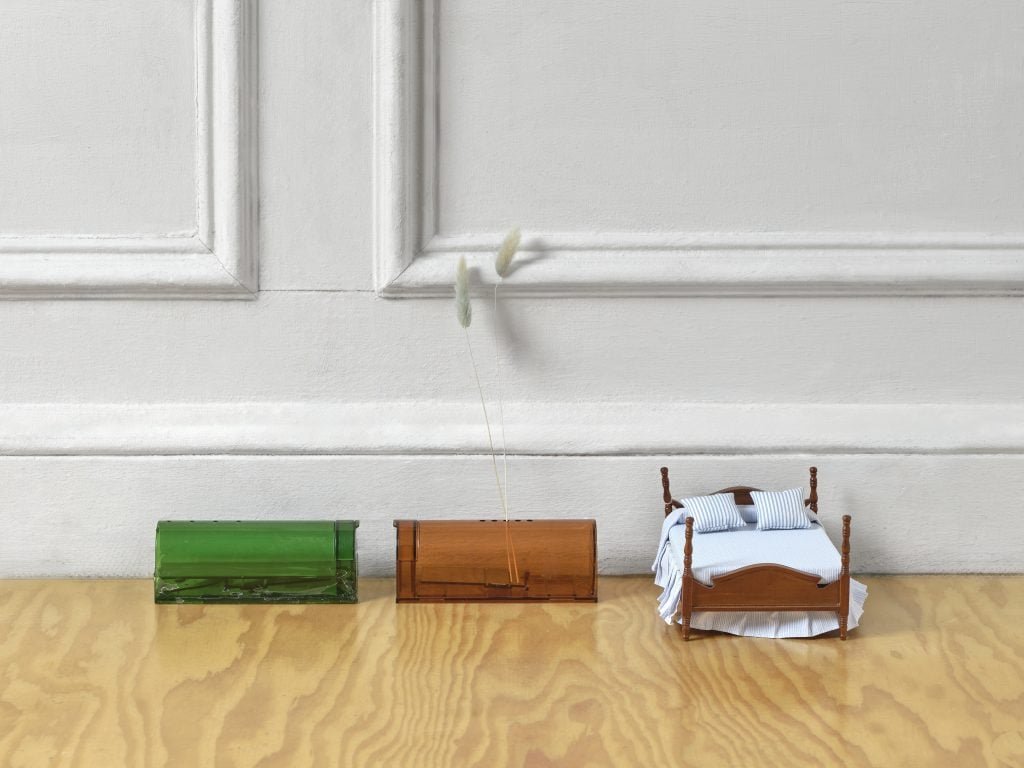
While solo shows might shine brightest on art world calendars, group shows offer a different kind of enlightenment.

Annikka Olsen

In an era when persona-driven solo shows reign supreme, the group show is—particularly during the summer, when out-of-office auto-responses are epidemic—often overlooked, or, worse yet, thought of as exhibition program “filler.” Yet it is precisely group shows that provide what is often seen as missing within the greater art world calendar and surrounding discourse: strong curatorial voices, thematic and medium-based explorations, and new perspectives on the current artistic zeitgeist. Group shows are a place where art—rather than the artist alone—gets the real limelight. Historically, it has also proven a potent entryway for emerging artists to get their foot in the proverbial door, without having to shoulder the immense pressure of a premature debut solo.
While single-artist shows are often touted either as star-making vehicles or as reflections of shifts in the art-making landscape—or both—their value primarily lies in their focused look at one artist’s work from a specific period (usually a recent one). To reiterate: There is real value in spotlighting one artist’s voice amid the art world cacophony. But the focus on solo shows can also be limiting. For broader insights, we must look to the group show.
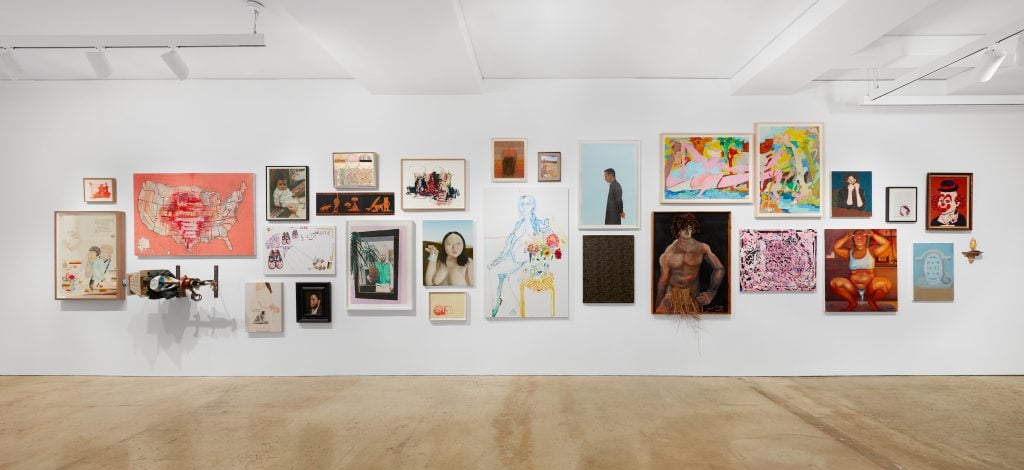
Installation view of “Yours Truly” (2024). Photo: Tom Powel. Courtesy of Nahmad Contemporary.
A Quick Look at Art History
There is substantial historical precedence validating the importance and influence of group shows. For example, in the late 1920s, a series of shows held at Opportunity Gallery showcased the work of Milton Avery, Adolph Gottleib, and Mark Rothko (then known as Mark Rothkowitz), an experience that led to lifelong mentorship, support, and influence between the three artists. Two decades later, In 1950, Gottleib paid it forward: Kootz Gallery invited its roster of artists to select work for “Fifteen Unknowns,” and Gottleib, acting now as curator, chose the work of Helen Frankenthaler, marking one of her first exhibitions and the start of a meteoric rise to fame. The following year, Kootz Gallery again made history with “Emerging Talent,” curated by Clement Greenberg, who included Morris Louis and Kenneth Noland, solidifying the emergence of the Washington Color School.
Writer and critic Lucy Lippard’s first independent curatorial project, “Eccentric Abstraction” at Fischbach Gallery in 1966, ushered in new considerations on the trajectory of sculpture. It featured 9 sculptors, including Bruce Nauman, Louise Bourgeois, and Eva Hesse, each of whom went on to fame. Yet even at that key moment, the format of the group show was under scrutiny. In David Antin’s review of “Eccentric Abstraction” for Art Forum, he noted:
[L]ike most group shows this one is no exception in begging the question of group exhibitions, despite a manifesto and group name … Artists do not commonly arrange themselves in groups any more than sea urchins and starfish align themselves with the echinoderms. At its most harmless the group show is a piece of innocent connoisseurship (“Seafood I Like”): at its most ambitious it is Linnaean, aiming at isolation of some tendency or cluster of tendencies by virtue of which the artists may be said to “play the same game.”
The shortcoming, even potential ham-handedness, of the “Linnean approach,” the boxing of artists into a category or classification system not designed by said artists, is one that has dogged modern art history and criticism, essentially since its inception. While the tactic may fall short in certain instances, it has nevertheless proven fruitful in grappling with the roiling current of contemporary art. Beyond clumsy attempts at establishing a stylistic cohort, the benefit of juxtaposition and contrast between artworks cannot be understated, as it can heighten the visual parallels or incongruities between works, or grant young artist’s the benefit of a curator’s eye for narrative that can open the way to new audiences.
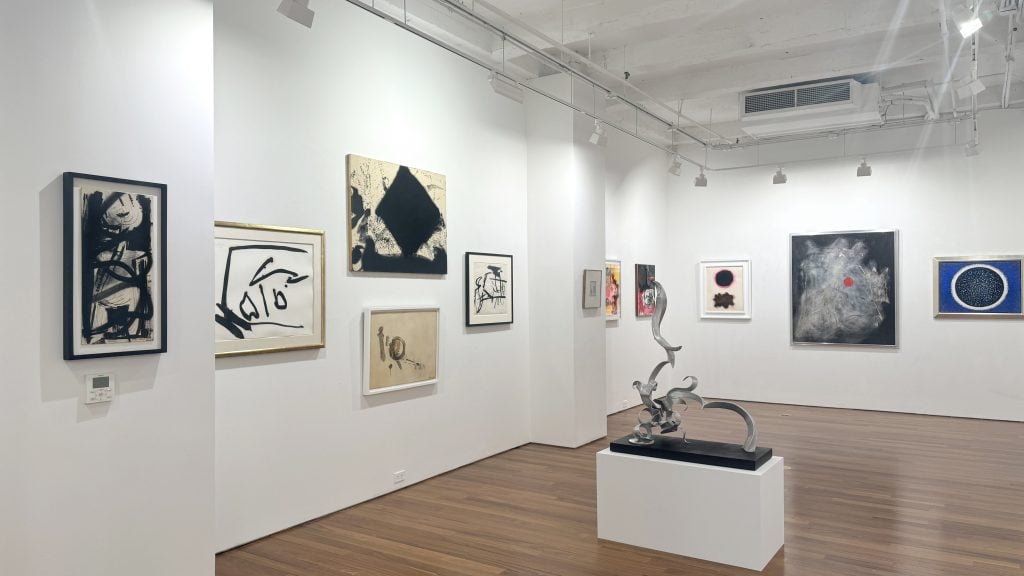
Installation view of “Asian – American Abstraction: Historic to Contemporary” (2024). Courtesy of Hollis Taggart.
East and West, Past and Present
With autumn on the horizon, a brief survey of summer group exhibition highlights from New York points to the range of art historical tracts still being mined and intriguing new themes being posited. Indeed, if you wanted a case for the continued relevance of historical group shows, one need look no further than the current exhibitions at Hollis Taggart and Fu Qiumeng.
In 1997, curator Jeffrey Wechsler organized “Asian Traditions / Modern Expressions: Asian-American Artists and Abstraction, 1945–1970” at the Zimmerli Art Museum at Rutgers University. Independently, both Taggart and Qiumeng were planning shows of Asian-American art, and reached out to Wechsler as an expert in the field. Wechsler then connected the two, and the result is a cross-gallery collaboration, with each gallery including works from the other in their respective show.
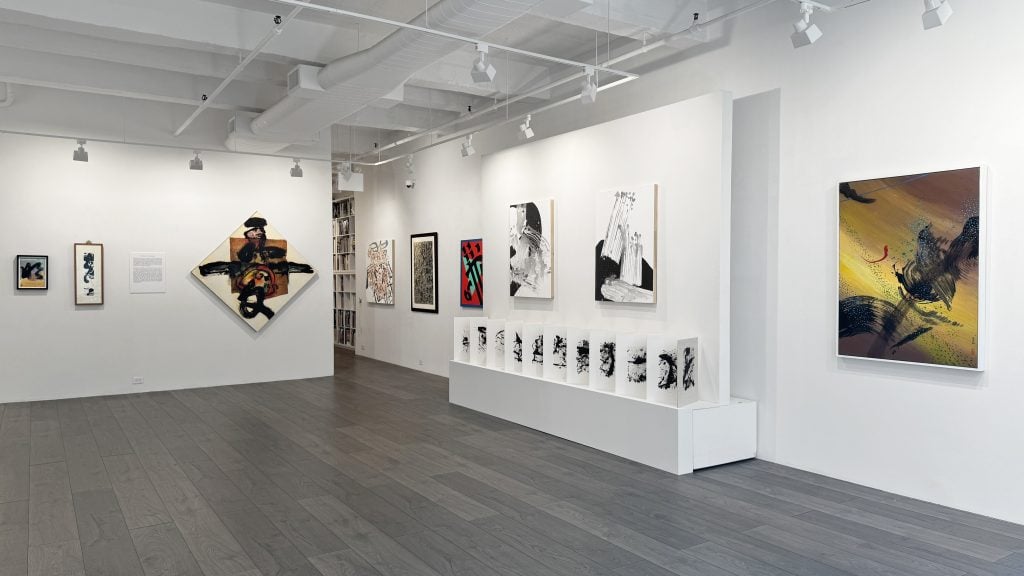
Installation view of “Asian – American Abstraction: Historic to Contemporary” (2024). Courtesy of Hollis Taggart.
“Asian – American Abstraction: Historic to Contemporary” at Hollis Taggart investigates the ways East Asian art and culture has impacted American art, from the mid-century New York art scene to the contemporary contributions of Asian diasporic artists. On view through early September, the show features the work of some 47 artists, including pieces from Fu Qiumeng’s roster by Arnold Chang and Hisao Hanafusa.
Meanwhile, at Fu Qiumeng, “Transcultural Dialogues: The Journey of East Asian Art to the West,” which opened in July and has recently been extended through October 19, traces the evolution of East Asian artistic traditions, both technical and conceptual, as they have been disseminated through the Western art world. Here, work by Hollis Taggart artists Sal Sirugo and Hayoon Jay Lee feel at home. Taken together, the two exhibitions, encompassing the work of over 60 artists collectively, successfully engage with the massive subject that is American and Asian artistic exchange and development, while providing historical context as well as ultra-contemporary perspective. The work of young, emerging artists hung alongside pieces by mid-career or historically significant artists, allowing trajectories of influence to be traced in real time.
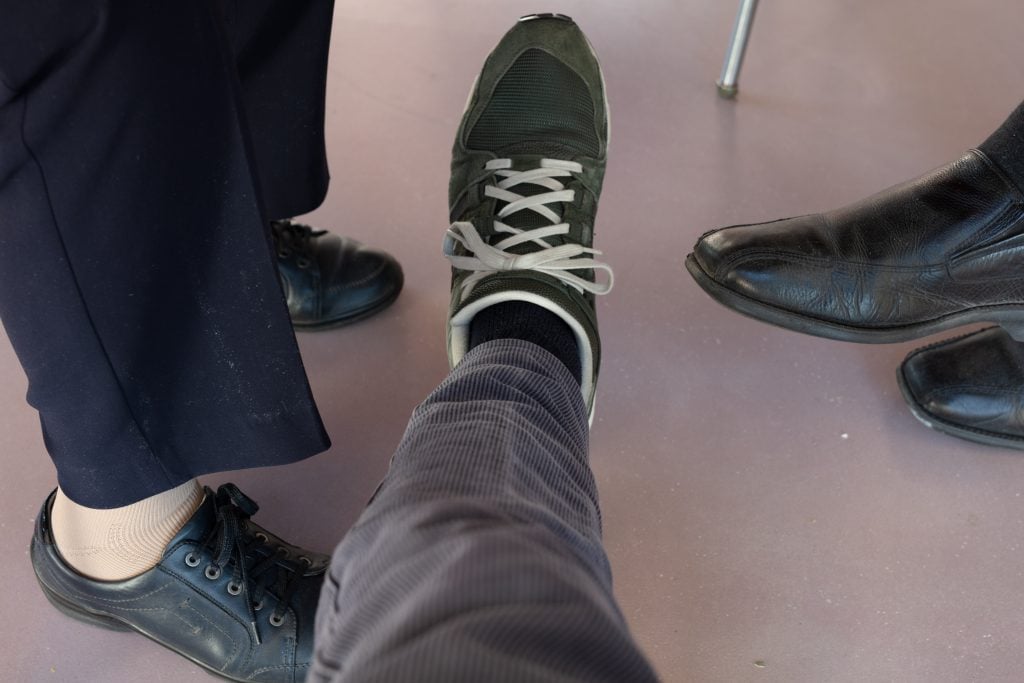
Wolfgang Tillmans, Elternesuch (2022). Courtesy of Nahmad Contemporary.
A Closer Look at Genre and Medium
Another leviathan group show, “Yours Truly” at Nahmad Contemporary on the Upper East Side also provides a fresh perspective. Comprised of 50 diverse living artists, the show surveys recent self-portraiture with the aim of capturing a nuanced and complex “snapshot” of the current moment—and all that entails.
Curated by Eleanor Cayre and on view through September 14, the very definition of self-portraiture as a genre is made malleable and subjective, both in medium and subject matter, when seen through the lens of a group show. Works on paper, paintings, and sculptures commingle. While some are executed in the expected figurative style, others—including a Wolfgang Tillmans photograph of his sneakered foot or a bronze cast of hair by Martine Syms—interrogate what a depiction of “self” actually means. Instead of a “Linnean” false unity, “Yours Truly” serves to illustrate the fluid state of representation, identity, and autobiographical expression today.
Where many shows discussed so far focus on artist-forward thematic explorations, at Kasmin, medium took center stage in “Crossings,” an international and intergenerational group show that spotlighted weaving, textiles, and embroidery in contemporary practice. Fiber art has seen a steady rise in popularity in recent years, but medium-specific shows have largely remained in the domain of big institutions (think of last spring’s “Weaving Abstraction in Ancient and Modern Art” at the Metropolitan Museum of Art, New York, or the touring “Woven Histories: Textiles and Modern Abstraction” at the Los Angeles County Museum of Art.)
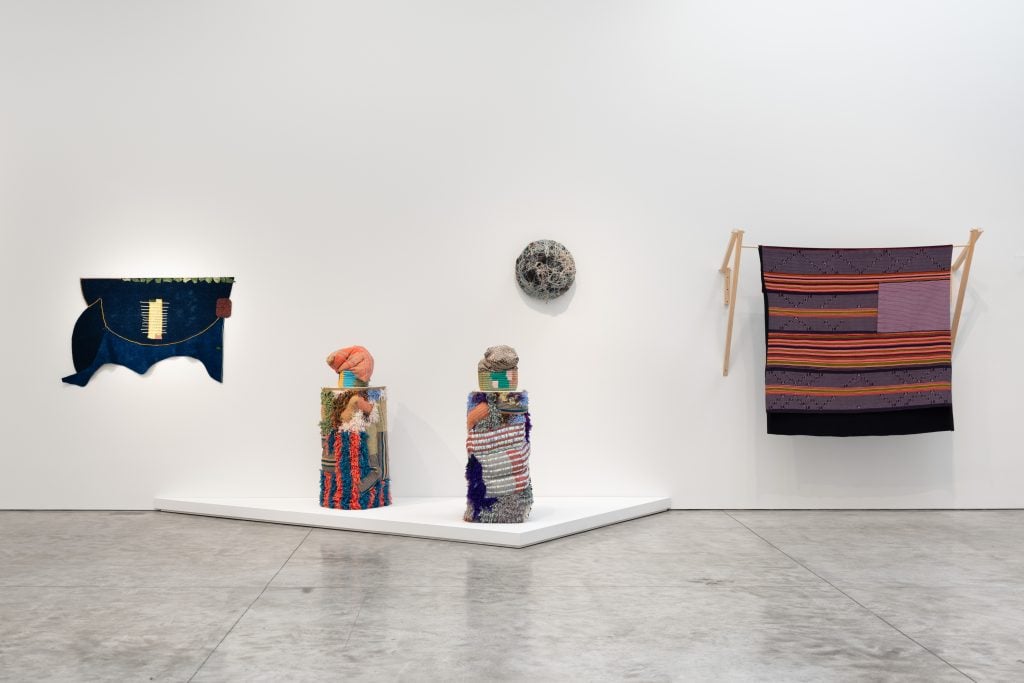
Installation view of “Crossings” (2024). Photo: Charlie Rubin. Courtesy of Kasmin.
As the titles of the two aforementioned museum shows suggest, textile art is frequently subjected to assessments that center other genres of art-making, most often with modes of painting like abstraction. “Crossings,” however, makes a case for the diversity of forms and styles within textile and fiber arts on their own merits. As one of the oldest creative mediums, the visual languages of textile art offer uniquely expressive possibilities. The exhibition also expands common notions of what textile artworks can be made from, with artists such as Ximena Garrido-Lecca incorporating copper, or both Olga de Amaral and Kenturah Davis using paper and precious metals in their works.
Basketry, frequently omitted from such discourse based on its propensity for the utilitarian, is highlighted in the work of Dee Clements, foregrounding that medium’s ability to dialogue with traditions of furniture-making, weaving, and ceramics.
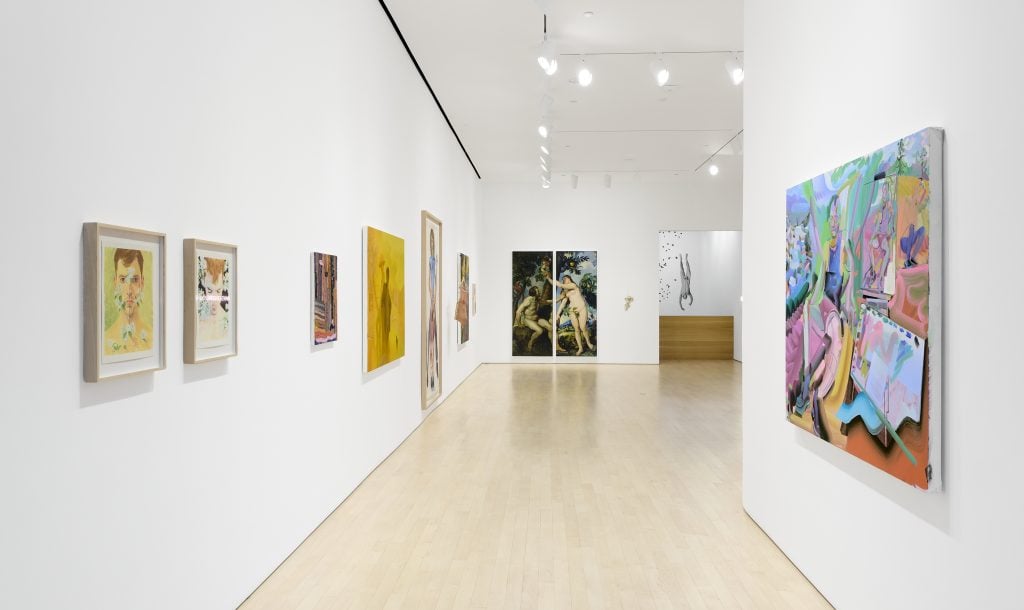
Installation view of “Echoes of Paradise” (2024). Courtesy of Jane Lombard Gallery.
Something Biblical
Turning to more ancient sources of inspiration, Biblical themes cropped up in group shows at both Jane Lombard Gallery ,with “Echoes of Paradise,” and The Hole, with “Monomythology,” both of which were on view earlier this summer. “Echoes of Paradise” was organized by curator, critic, and publicist Alejandro Jassan and tapped the thematically rich concept of the Garden of Eden. Rather than leverage harsh contrasts or discordant arrangements, this vibrant and playful show created a viewing experience that, just beneath the surface, offered a refreshed contemporary take on an ancient theme.

Brittney Leanne Williams, The Inspiration of St. Matthew (after Caravaggio) (2023). Courtesy of The Hole.
Around the corner, “Monomythology,” curated by The Asbæks of Danish art consultancy Collaborations, tackled the contemporary visual language of religion and the depiction of “God.” Born from a conversation between the curators and artist Martin Brandt Hansen, whose practice engages with Inuit mythology and his own background hailing from Greenland, the show skirts the polemical and instead prompts reflection on the representation—or lack thereof—of “god” in the modern age.
While artists in the show such as Brittney Leeanne Williams tap the Baroque imagination in The Inspiration of St. Matthew (after Caravaggio) (2023), others like Zevs propose futuristic considerations of the heavenly with Emergence of the New Divine (2024). Despite the broad range of artistic approaches and varying degrees of thematic relevance, the result was the creation of a space for quiet contemplation, where one could engage with what is arguably one of the most pervasive subjects in art history.
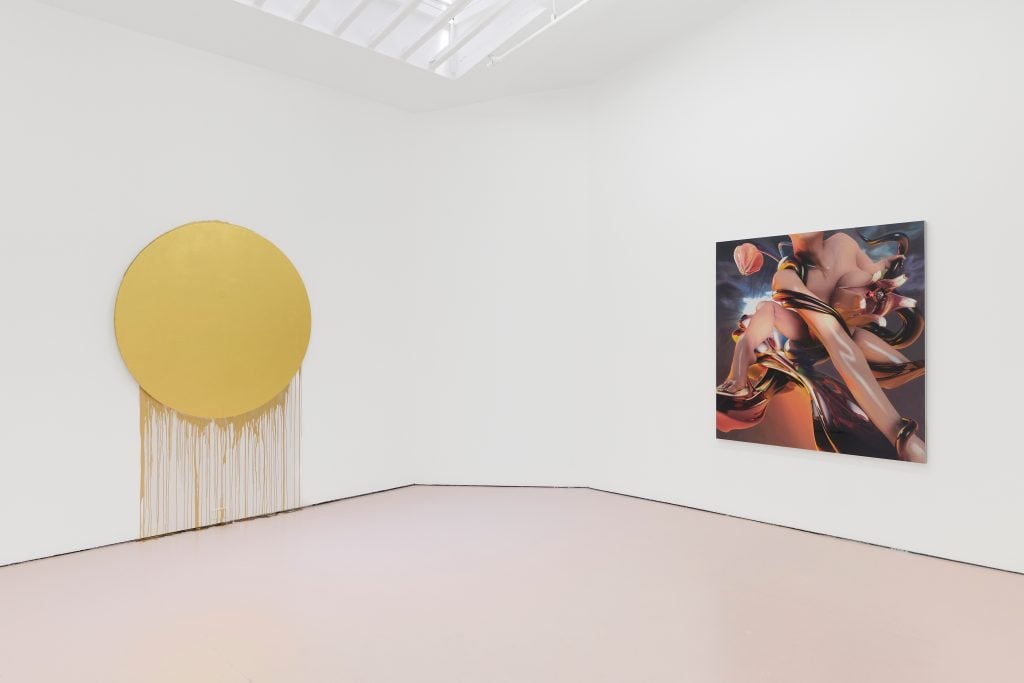
Left: Zevs, Emergence of the New Divine (2024). Right: Salomé Chatriot, IDOL (Hydra) (2023). Courtesy of The Hole.
Home Is Where the Bed Is
At Margot Samel, the work of 19 artists who have explored the subjects and concepts of beds and rest came together in a show with the wonderful title “Thank you, I’m rested now. I’ll have the lobster today, thank you,” from late June to late July. The bed, beloved by many (most? all?), here came to symbolize a site of accumulation of everything from bodies and time to dreams and nightmares.
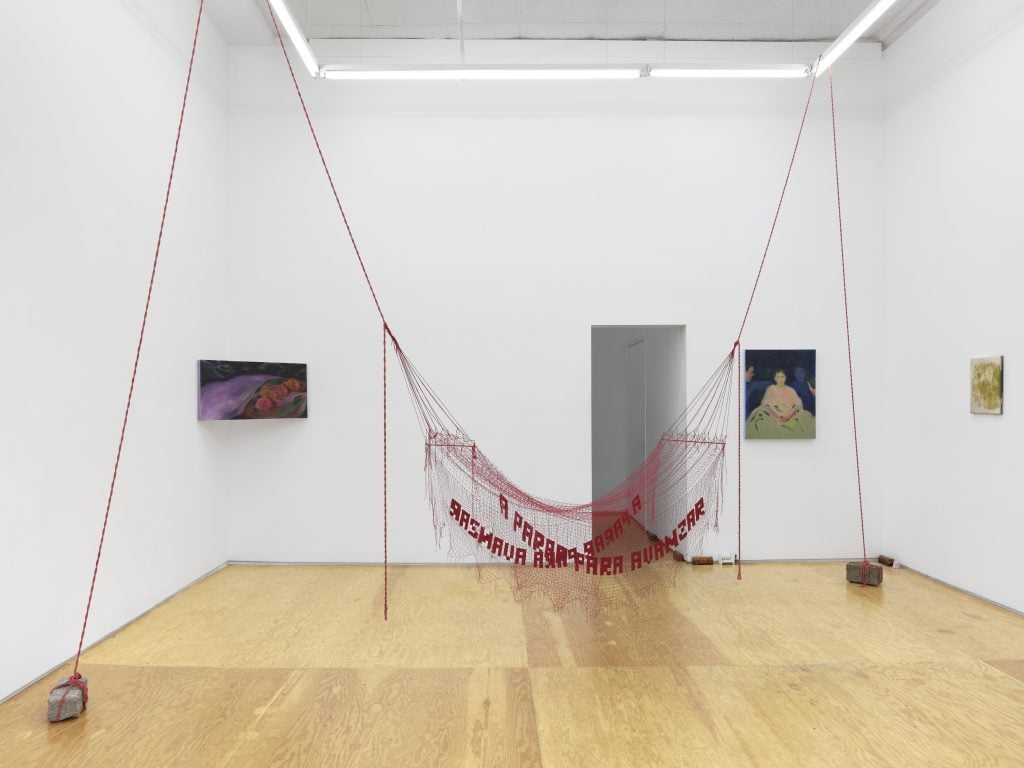
Installation view of “Thank you, I’m rested now. I’ll have the lobster today, thank you” (2024). Photo: Matthew Sherman. Courtesy of Margot Samel.
The show’s title as well as its tenor is drawn from a 2016 collage by Karen Kilimnik, featuring a Siamese cat on an elaborate canopied bed replete with stanchioning. Cathleen Clarke’s The Visitors (2024) blurs the line between psychology and reality, dwelling on the specters of the mind that leave us sleepless. Conversely, Bertha Leonard’s cozy and colorful Untitled (1982) gives viewers a glimpse at what can only be described as a sumptuous pre-bed routine. And diminutive sculptures from Nadia Belerique’s “SLICE (mousetraps)” series, featuring dollhouse-sized beds and mousetraps, were dotted around the gallery space’s baseboards.
These shows reflect only a fraction of the season’s offerings, but they testify to the flexibility of the summer group show. To go back to David Antin’s reflections on “Eccentric Abstraction” from the late ’60s, these exhibitions illustrate that such shows can be something more than an assembly of “Seafood I Like” without having the burden of being a pseudo-scientific exercise in classification of artistic lifeforms. Somewhere in the middle, they can just be a contribution to a healthy and diverse artistic landscape and dialogue.